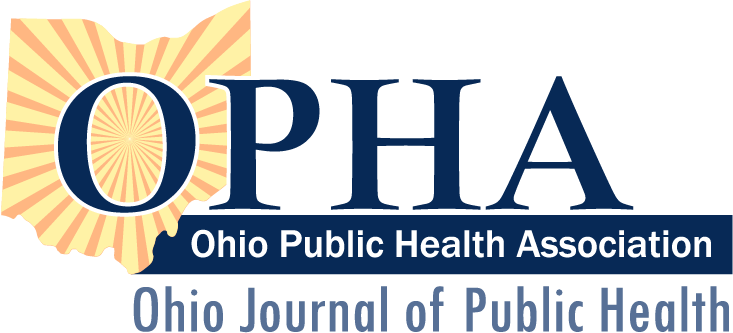A Geographic Perspective on Opioid Misuse: Substance Abuse Treatment Deserts in Southwestern Ohio
Abstract
Background: The opioid crisis is one of the most pressing public health issues facing Ohio, with an impact uneven-ly distributed across the state. This work examined geographical barriers to substance abuse treatment in southwestern Ohio through examining geographical areas with limited access to substance abuse treatment services and identifying substance abuse treatment deserts.
Methods: The study domain included the 13 counties in the Ohio Mental Health and Addiction Service's Cincinnati region. Publicly available substance use disorders treatment data were collected from government agency resources, pharmaceutical websites, and web searches. Substance abuse treatment deserts were defined as areas in the 13-county study area that were not within a 15-minute drive from a treatment center.
Results: We found large portions of the study region that were considered a substance abuse treatment desert for methadone and naltrexone/buprenorphine clinics, behavioral health treatment centers, and both medicated assisted treatment (MAT) and behavioral health treatment combined. Out of the 2 017 337 total persons living in the 13-county study area, 17% (n = 342 872) live in a desert for all MAT and behavioral treatment. Similarly, 19.7% (n = 396 581) live in a desert for naltrexone/buprenorphine treatment, 60.9% (n = 1 227 560) live in a desert for methadone treatment, and 19.7% (n = 396 581) live in a desert for behavioral health treatment.
Conclusion: We successfully defined substance abuse treatment deserts in southwestern Ohio, which will be useful for future research to determine its association with opioid-related health outcomes. This resource is publicly available online (https://doi.org/10.5281/zenodo.4011051).
Keywords: Opioid abuse, Treatment desert, Medicated assisted treatment, Behavioral health treatment, Geospatial
How to Cite:
Lowe, L., Brokamp, C., Rasnick, E., Hall, E. & Acquavita, S., (2021) “A Geographic Perspective on Opioid Misuse: Substance Abuse Treatment Deserts in Southwestern Ohio”, Ohio Journal of Public Health 4(1), 31-37. doi: https://doi.org/10.18061/ojph.v4i1.8075
Rights: Linnea Lowe, Cole Brokamp, Erika Rasnick, Eric S. Hall, Shauna Acquavita
Downloads
Download PDF
